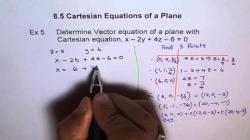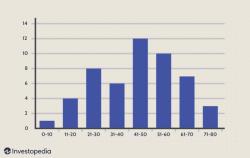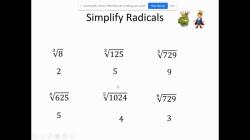How do you calculate output?
Calculating output in computing or any other field typically depends on the specific context and the nature of the task or system you are dealing with. Here are some general methods and techniques for calculating output in various scenarios:
Mathematical Formulas:
- In many mathematical and scientific contexts, output can be calculated using well-defined formulas and equations. For example, to calculate the area of a rectangle, you use the formula: Area = Length x Width.
Programming and Coding:
- In computer programming, you calculate output by writing code that performs specific operations on input data. Output is often generated by functions or algorithms that process the input. For example, in Python, you might use the
printfunction to display output on the screen.
- In computer programming, you calculate output by writing code that performs specific operations on input data. Output is often generated by functions or algorithms that process the input. For example, in Python, you might use the
Data Analysis and Statistics:
- In data analysis and statistics, calculating output involves performing statistical calculations on datasets. Common calculations include mean, median, mode, standard deviation, and regression analysis.
Simulations:
- In scientific research and engineering, simulations are used to calculate output. Complex models and simulations use input parameters to generate output that mimics real-world phenomena or systems.
Numerical Methods:
- Numerical methods, such as the finite element method or the Runge-Kutta method, are used to approximate solutions to mathematical problems that may not have closed-form solutions. These methods involve iterative calculations to produce output.
Machine Learning and Artificial Intelligence:
- In machine learning and AI, models are trained using input data, and the output is predictions or classifications based on new data. Algorithms like neural networks learn patterns from data to produce output.
Scientific Experiments:
- In laboratory experiments, scientists manipulate variables to observe how they affect the output or outcome. Data collected from experiments are used to calculate output.
Economic and Financial Analysis:
- In economics and finance, various formulas and models are used to calculate output, such as calculating the future value of investments, determining economic indicators like GDP, or projecting financial performance.
Simulation Software:
- Specialized software tools and simulation platforms are used in engineering, physics, and other fields to calculate output by modeling complex systems and scenarios.
Business and Operations:
- Businesses often use key performance indicators (KPIs) and metrics to calculate output related to sales, production, efficiency, and financial performance.
Control Systems:
- In control systems engineering, output is calculated by measuring the system's response to inputs and adjusting control signals to achieve desired outcomes.
Statistical Software:
- Statistical software packages like R, SAS, or SPSS are used to perform advanced statistical analyses and calculations, often involving large datasets.
Simulation and Modeling Tools:
- Various software tools and platforms, such as MATLAB, Simulink, or COMSOL, provide capabilities for modeling, simulating, and calculating output in scientific and engineering applications.
The specific method or technique you use to calculate output will depend on your field of study, the problem you are trying to solve, and the available tools and resources. It's important to select the appropriate approach and validate your calculations to ensure accuracy and reliability, particularly in scientific, engineering, and research contexts.
Calculating Output: Methods and Formulas
Output is the total amount of goods or services produced in a given period of time. It can be calculated using a variety of methods and formulas, depending on the specific industry or field.
One common method for calculating output is to use the following formula:
Output = Total revenue / Unit price
This formula can be used to calculate the total output of a company or industry, as well as the output of an individual worker or machine.
Another common method for calculating output is to use the following formula:
Output = Quantity produced * Unit price
This formula is similar to the previous formula, but it uses the quantity produced instead of the total revenue. This formula can be used to calculate the output of an individual product or service.
In addition to these general methods, there are also a number of specific methods and formulas for calculating output in various industries and fields. For example, economists use a variety of methods to calculate the output of a national economy, while accountants use a different set of methods to calculate the output of a company.
Determining Output in Various Fields: Step-by-Step Guide
The steps involved in determining output vary depending on the specific industry or field. However, there are some general steps that can be followed:
- Identify the relevant inputs and outputs. The first step is to identify the inputs and outputs that are relevant to the specific industry or field. For example, the inputs for a manufacturing company might include raw materials, labor, and energy. The outputs for a manufacturing company might include finished products and byproducts.
- Collect data on inputs and outputs. Once the relevant inputs and outputs have been identified, data needs to be collected on these inputs and outputs. This data can be collected from a variety of sources, such as accounting records, production records, and customer surveys.
- Calculate output using the appropriate method or formula. Once the data on inputs and outputs has been collected, the output can be calculated using the appropriate method or formula. The appropriate method or formula will depend on the specific industry or field.
Measuring Results: Output Calculation Techniques
There are a number of different techniques that can be used to measure results. One common technique is to compare the actual output to the planned output. This will show whether the output is meeting or exceeding expectations.
Another common technique is to compare the output of one period to the output of another period. This will show whether the output is increasing, decreasing, or staying the same over time.
In addition to these general techniques, there are also a number of specific techniques that can be used to measure results in various industries and fields. For example, accountants use a variety of techniques to measure the financial performance of a company, while economists use a variety of techniques to measure the economic performance of a country.
Conclusion
Output is an important measure of productivity and efficiency. By understanding how to calculate and measure output, businesses and organizations can improve their performance and achieve their goals.












